Odyssey
In Summer '10 an idea was thrown out to a group of friends: What if we could make a holodeck? Thus was the inception of what would eventually become Odyssey. In those two years since, the project has been worked on by an Innovation class group and as a personal side project, before finally being taken on by our New Media Team Project group, Upstate Freshness, in Fall '11. Since then, the scope of what is now called "Odyssey" grew dramatically; from a simple proof-of-concept to an entirely new multimedia platform.
Odyssey won first prize at RIT's Winter 2012 Research & Innovation Symposium. Our team planned to further develop our software to take advantage of the innovative properties of the Odyssey platform, and refine the motion controls to deliver the most intuitive control scheme possible. We also intended to develop a permanent mounting system for our installation, and presented a near production-quality iteration of Odyssey at 2012's ImagineRIT Festival. After graduation of the team members in 2012, however, future development of Project Odyssey was put on hold.
In Summer '10 an idea was thrown out to a group of friends: What if we could make a holodeck? Thus was the inception of what would eventually become Odyssey. In those two years since, the project has been worked on by an Innovation class group and as a personal side project, before finally being taken on by our New Media Team Project group, Upstate Freshness, in Fall '11. Since then, the scope of what is now called "Odyssey" grew dramatically; from a simple proof-of-concept to an entirely new multimedia platform.
Odyssey consisted of a 12-ft tall, 16-ft diameter cylindrical screen, 4 short-throw projectors, surround sound speakers, a PC and a Kinect. The screen and projectors provided 360 degrees of immersive visuals and audio- breaking through the paradigm of the "flat screen" that modern visual media has been subjected to for over a century. The Kinect-based motion controls offered free movement in all directions, as opposed to the narrow field of motion offered by a traditional TV screen.
Odyssey won first prize at RIT's Winter 2012 Research & Innovation Symposium. Our team planned to further develop our software to take advantage of the innovative properties of the Odyssey platform, and refine the motion controls to deliver the most intuitive control scheme possible. We also intended to develop a permanent mounting system for our installation, and presented a near production-quality iteration of Odyssey at 2012's ImagineRIT Festival. After graduation of the team members in 2012, however, future development of Project Odyssey was put on hold.

This is the first iteration of what would eventually become Odyssey; a project codenamed ImmerSpace. A three-man team spent a quarter working to build a cubical screen installation with four short-throw projectors for each face of the cube.
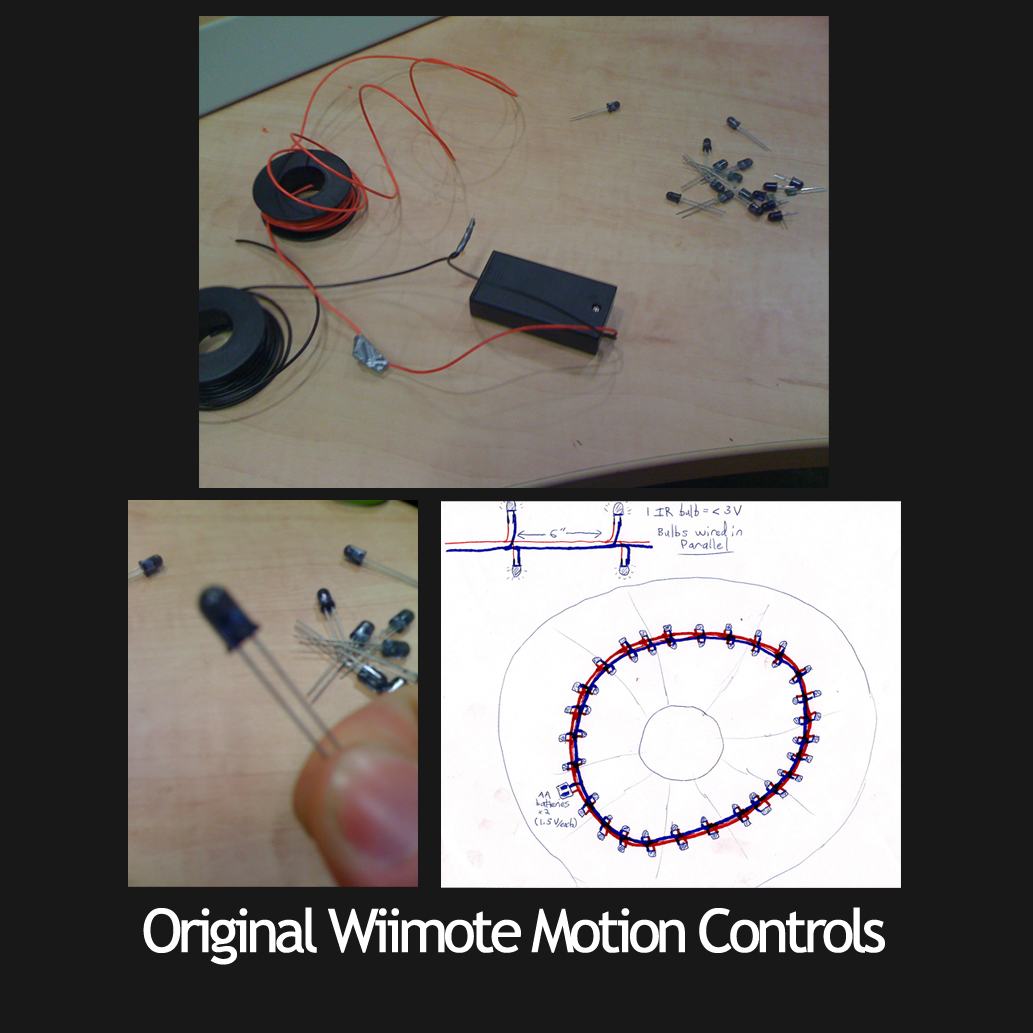
The motion control solution was to utilize a hacked Wii remote running in tandem with a custom-wired array of infrared LED lights, allowing the Wiimote to send and receive tracking data regardless of where the user pointed. While sound in theory, the IR array was never completed, and the theory never tested; less than a month later, Kinect was released, and by a week after that it had already eclipsed the Wii in terms of possibilities it offered to homebrew programmers.
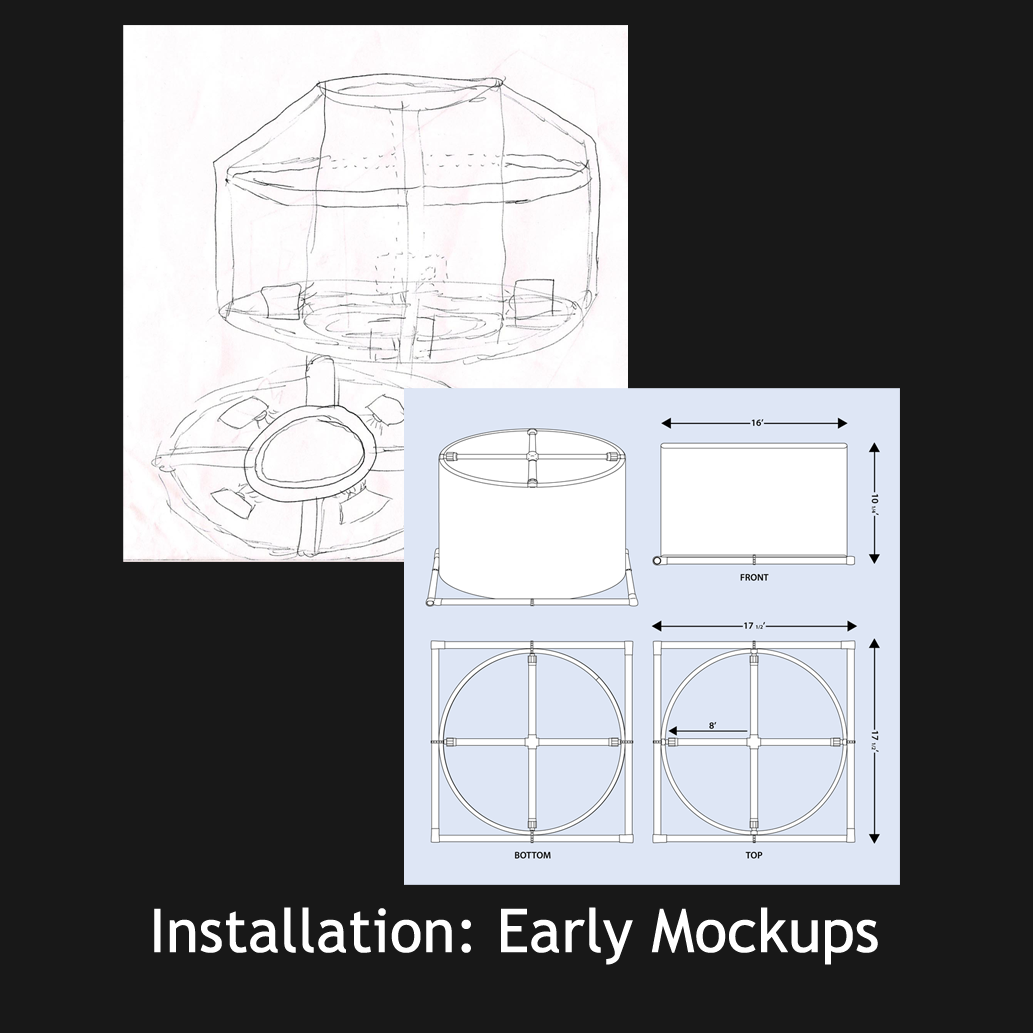
Early versions of the cylindrical installation called for a stand-alone frame; this was later simplified to a version which hung from a ceiling with a specially-prepared mounting solution.

This render illustrates the intended final installation, complete with hanging screen installation and anchored frame.

The next Fall after the ImmerSpace project ended, it was taken up again by our New Media Team Project team, Upstate Freshness. This second prototype saw the introduction of the cylindrical shape and the hanging top ring, although the bottom frame was not yet complete, and as a result the installation was not anchored to the ground, leaving a gap near the floor. To create the perfect circles needed to frame the cylinder, we tried several possible materials until we finally came across Pex, a type of PVC piping that is both flexible and sturdy, able to bend to the required angles while still holding its shape.
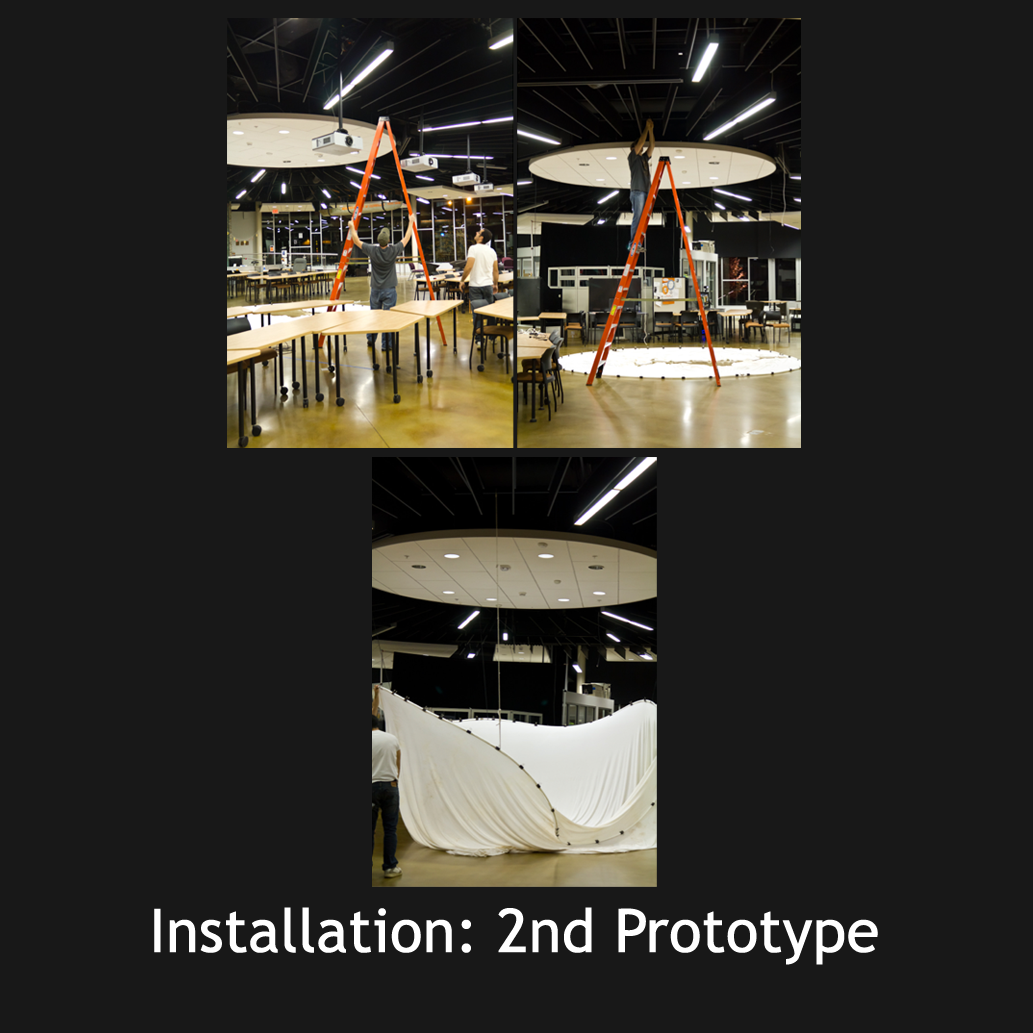
We then drilled eye hooks into the top ring and tied lengths of fishing line to them, along with hooks on the other end to hook onto the ceiling section above. However, we hadn't finished making the fishing line hangers as of these photos, so we ended up hanging them with some MacGyver'ed power cords instead.
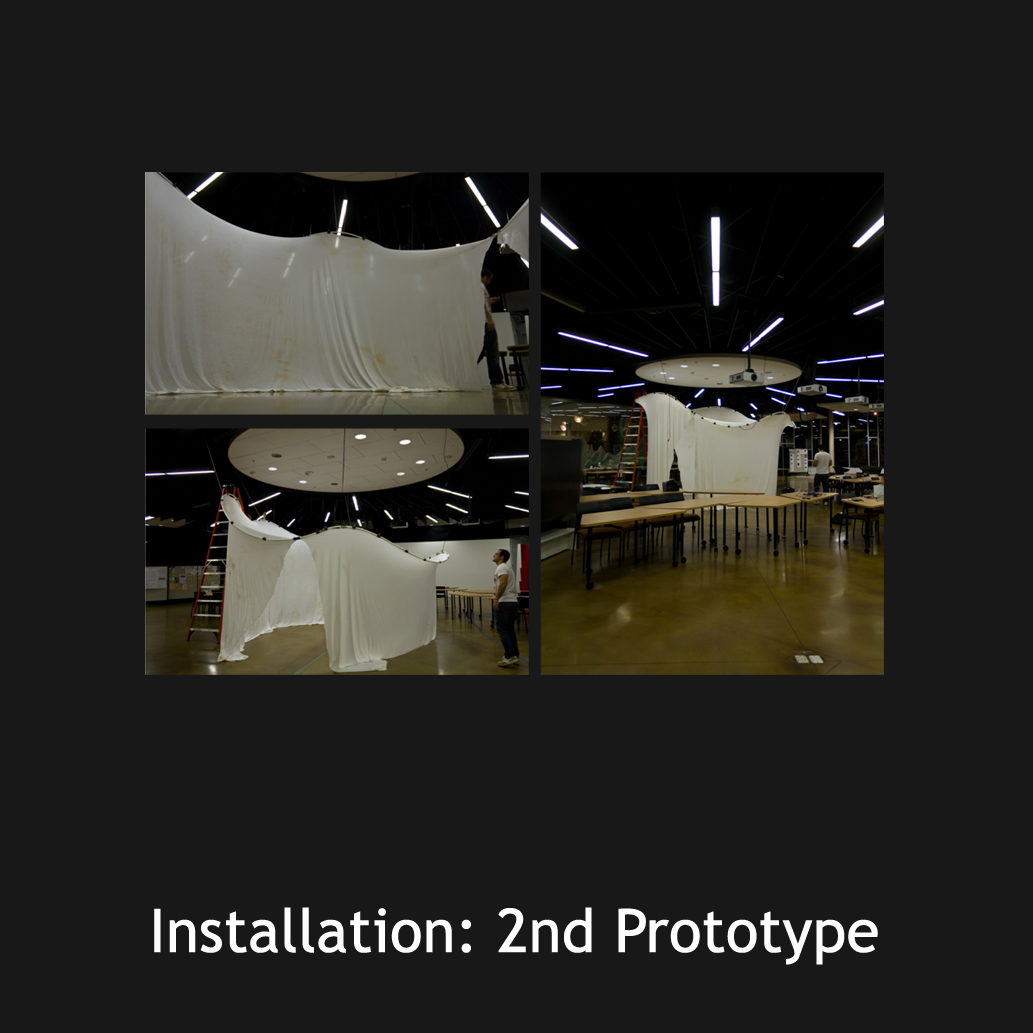
We knew that for our final installation we would need to sew together the sections of screen we had into one long length, as well as sew a loop into the top for the Pex ring to pass through, to replace the binder clips temporarily holding it in place. For that we turned to my friend Eliza Hammer, Lead Fellow at the Innovation Center and master sewer.

Considering how many pieces of the puzzle had yet to fall into place for our installation, the result at that point was still pretty awesome.
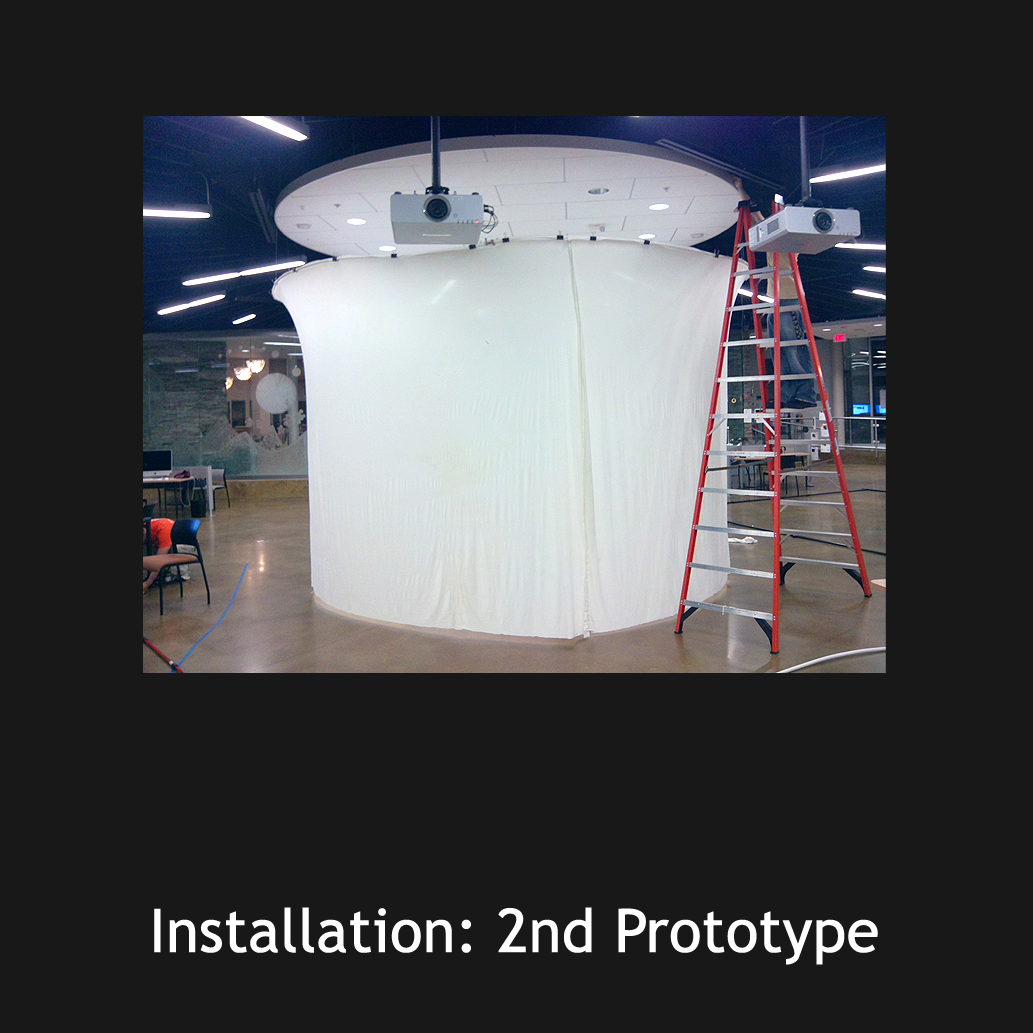


We tried various software screen stitching solutions before we came in contact with the makers of Immersive Desktop, who agreed to offer us a discount for their software package.
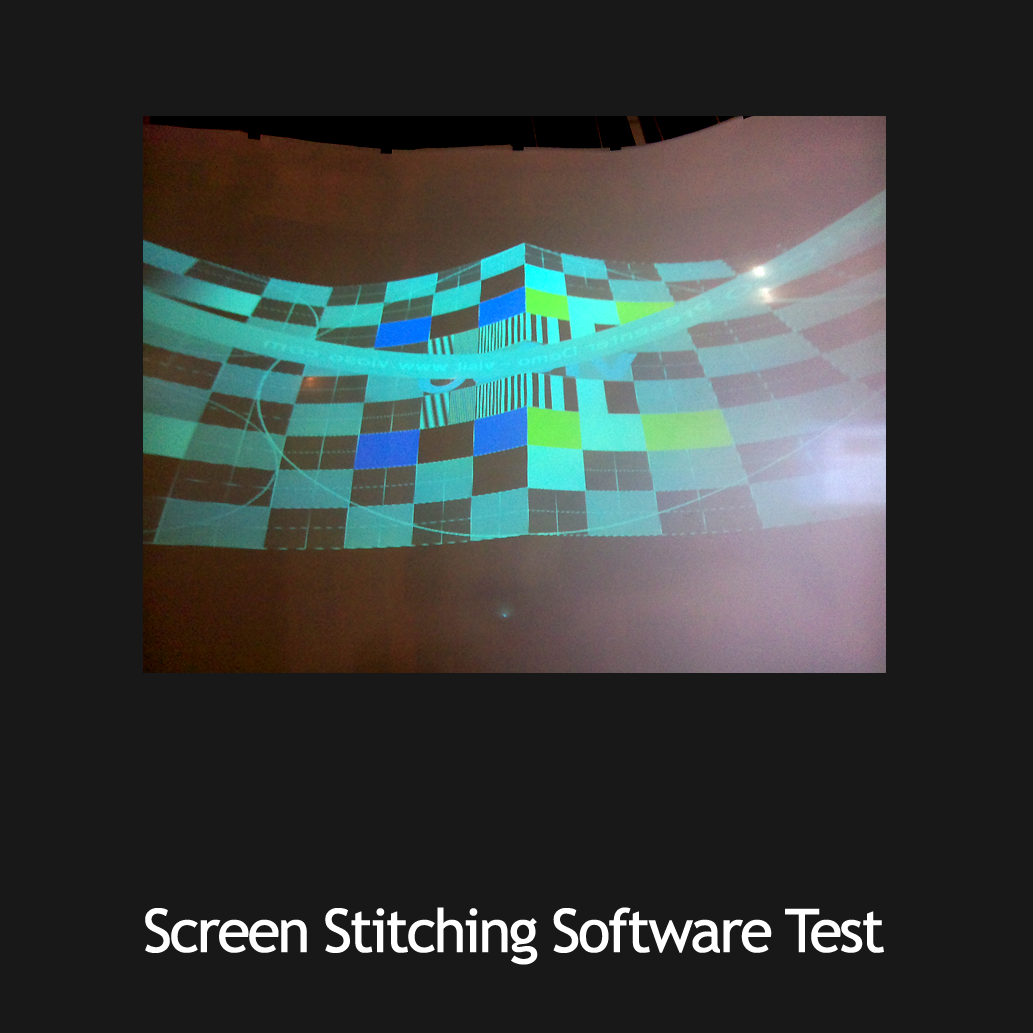
The process of manually stitching all four screens together was a grueling process that took hours to complete. And since we had to reassemble the installation each time we needed to use it, we also had to adjust the stitching coordinates each time, to account for variations in the fabric.
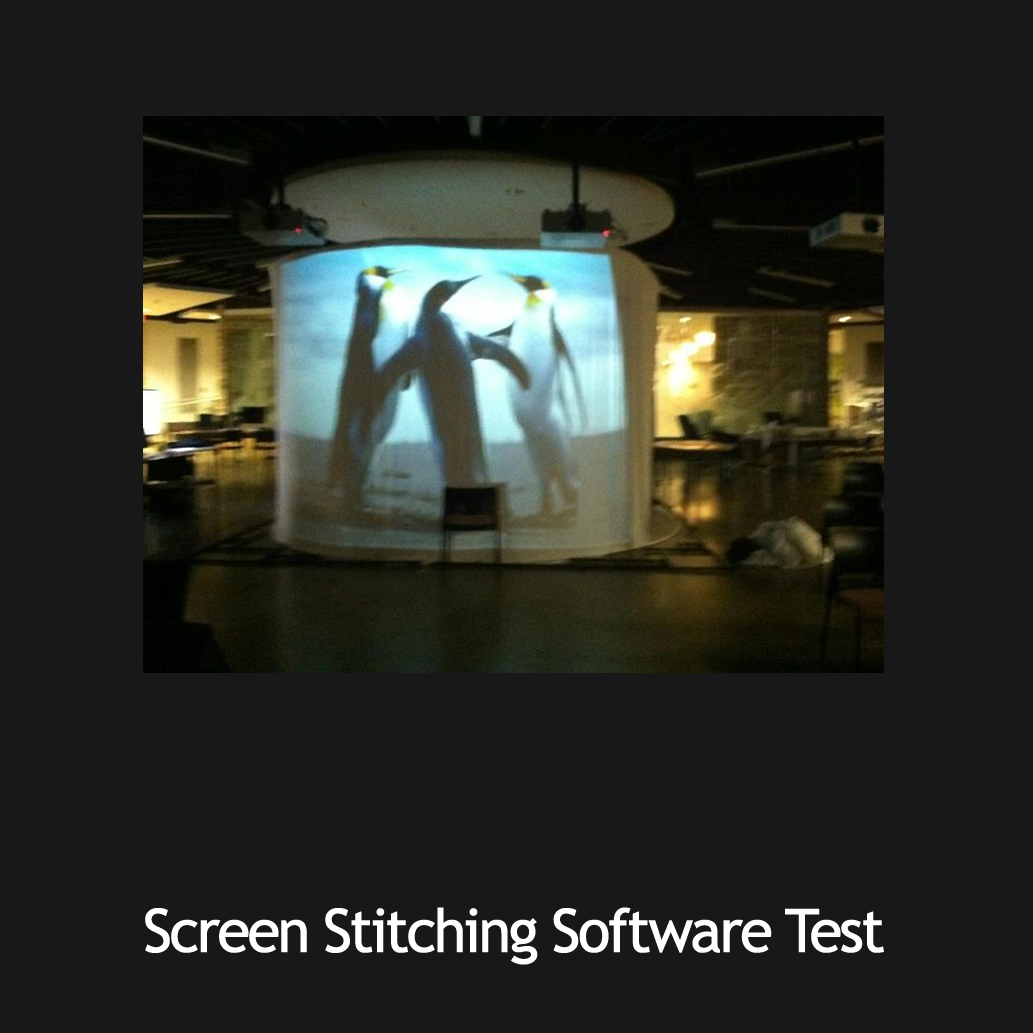
Because nothing on Earth is more impressive than a 12 foot-tall penguin.
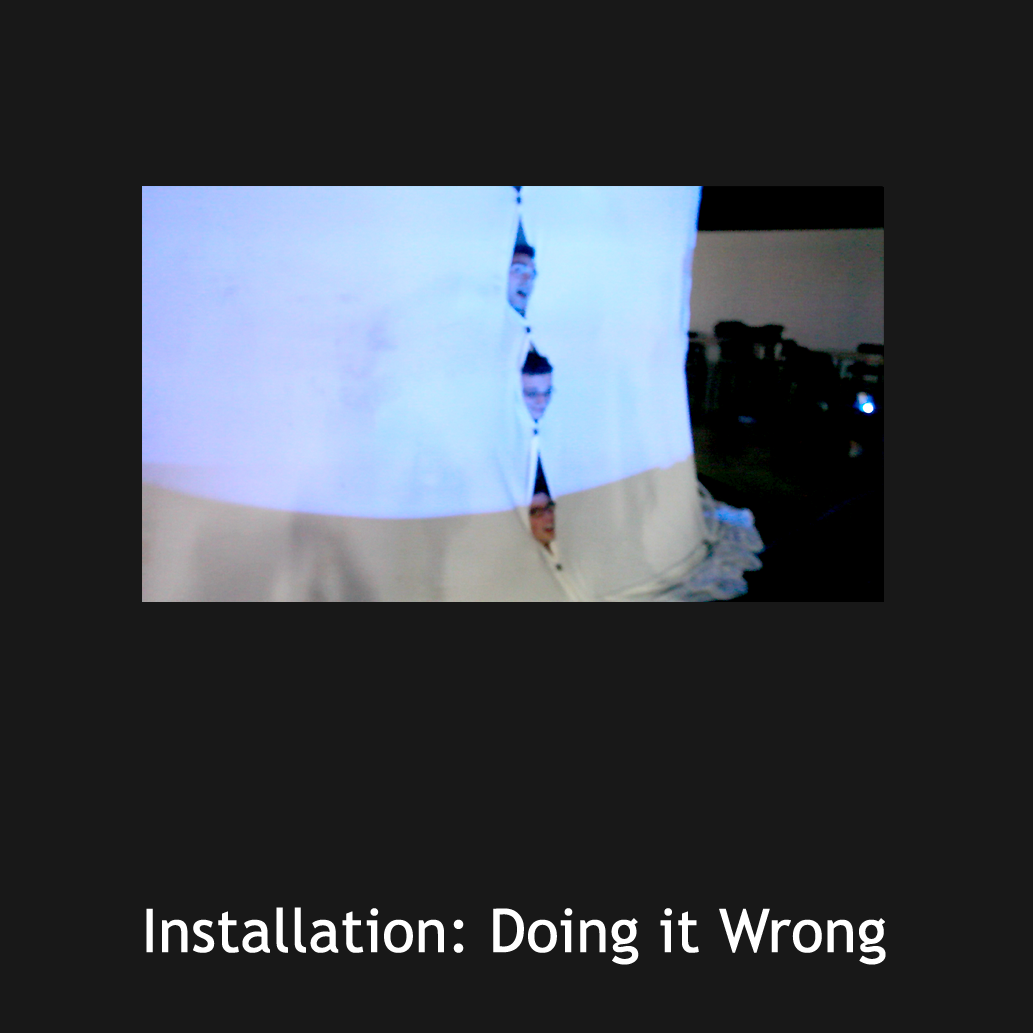
I thought I could create a more elegant entrance to the installation, if I used human heads. I was wrong.
I took this video on the night we finally got all the components of Odyssey running together for the first time: the 360-degree screen and stitched projectors; the surround sound speaker setup; the Kinect motion controls; and the program our designers had been building in Unity to tie it all together.
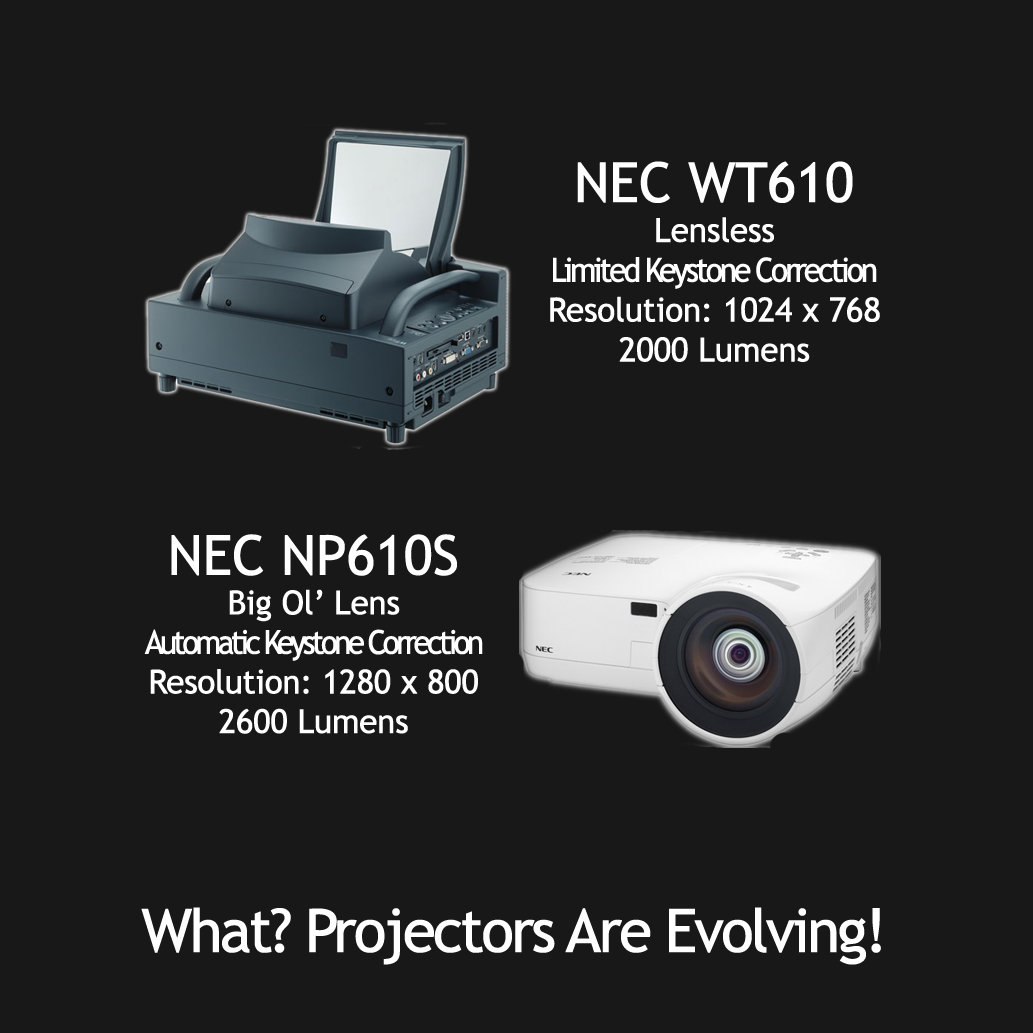
We got an unexpected bonus from RIT's CIAS department, which allowed us to borrow four of their high-end short throw projectors to use during our Media Day final presentation. The difference they made was astounding. Although in the past we had been able to get by with the older projectors which were loaned to us by RIT's Innovation Center, the brightness, clarity and distortion-free image put out by CIAS's projectors put ours to shame.
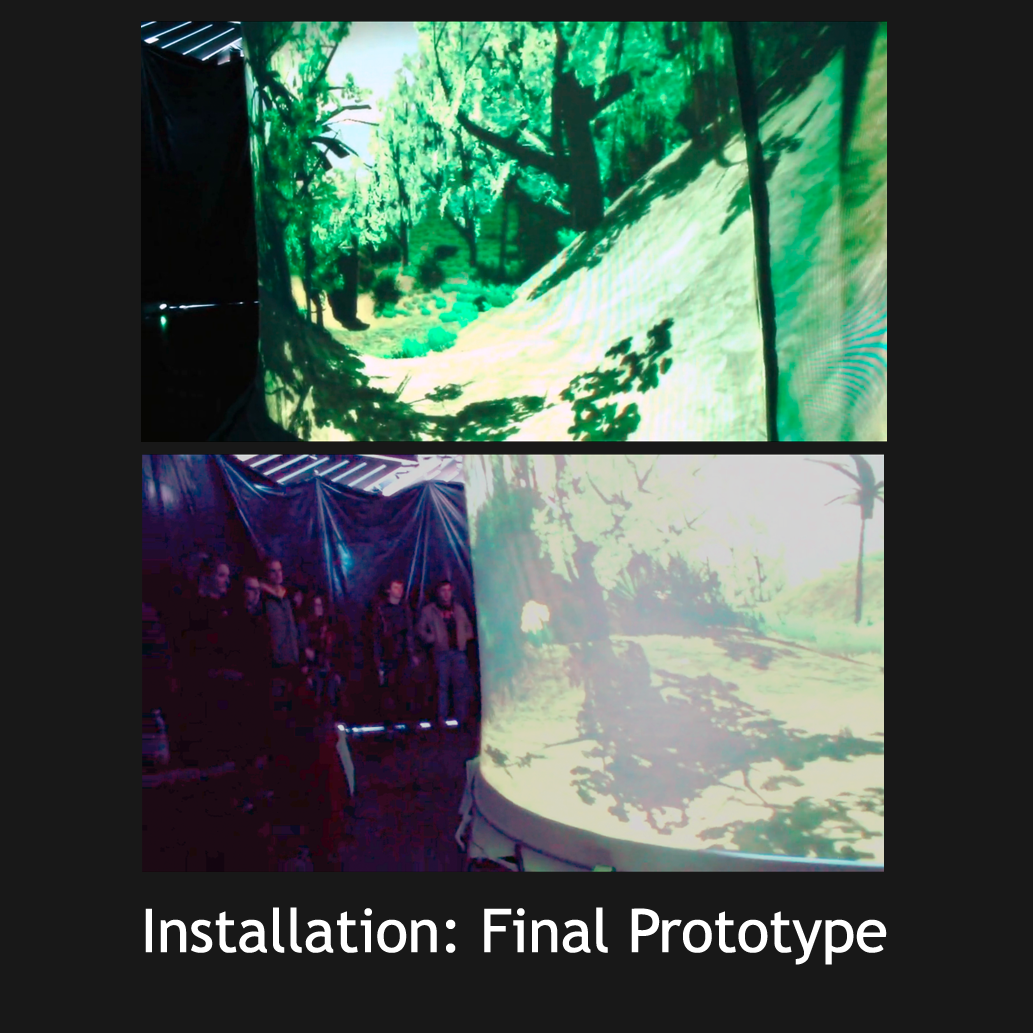
Odyssey's showing at the New Media Team Project Media Day drew quite a crowd- whom were just amazed from the outside looking in as those inside the actual installation.

Coming up with a practical and unobtrusive entrance for the installation was one of the most difficult obstacles we faced. What we decided on as the final version of the installation's entrance consisted of discreetly placed velcro strips to hold the two flaps of the screen together, while allowing for easy entrances and exits.
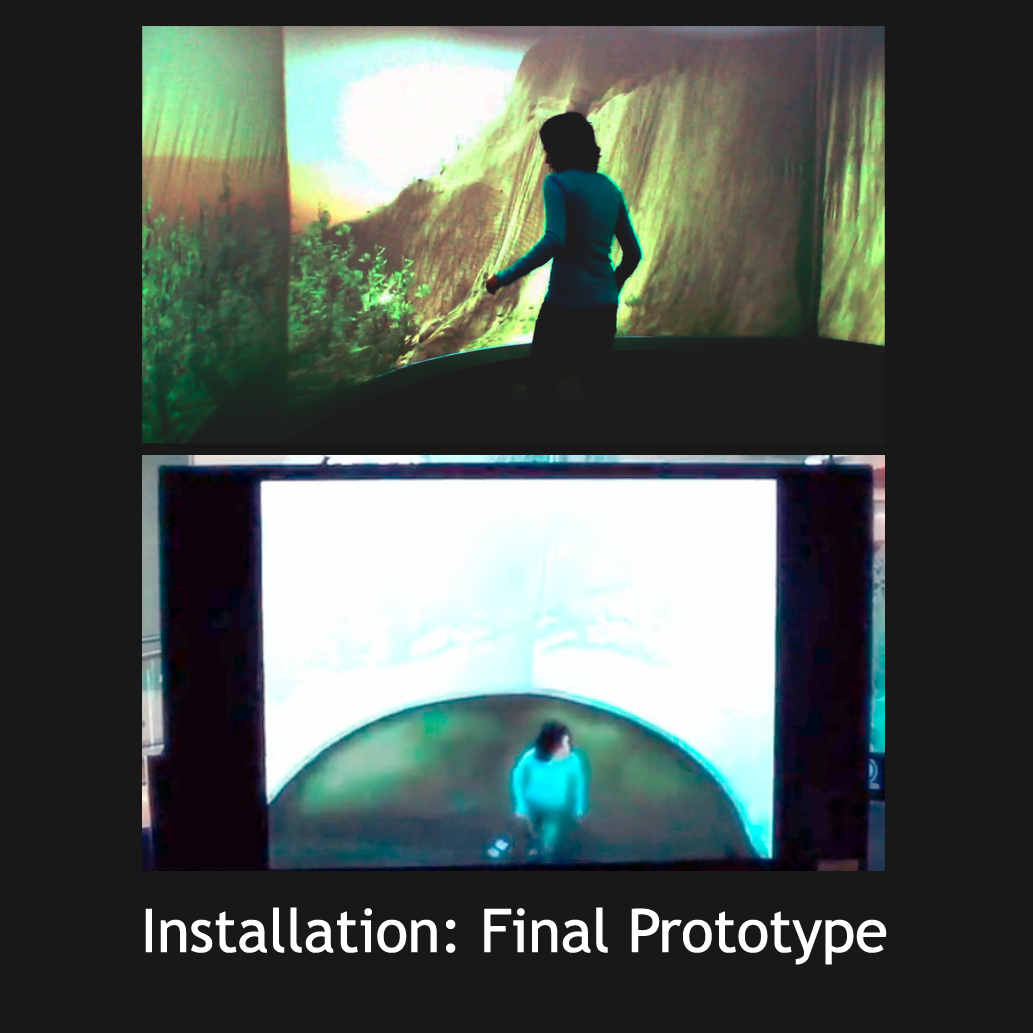
During the showing, we had a webcam hooked up and sending a live feed of the inside of Odyssey while it was being demoed. We ran a live stream of the feed on Justin.tv so that anyone could watch Odyssey in action during the event.
This is the teaser video our team's designers whipped up for Media Day. It takes assets from the application they built in Unity to use as our proof-of-concept software.






